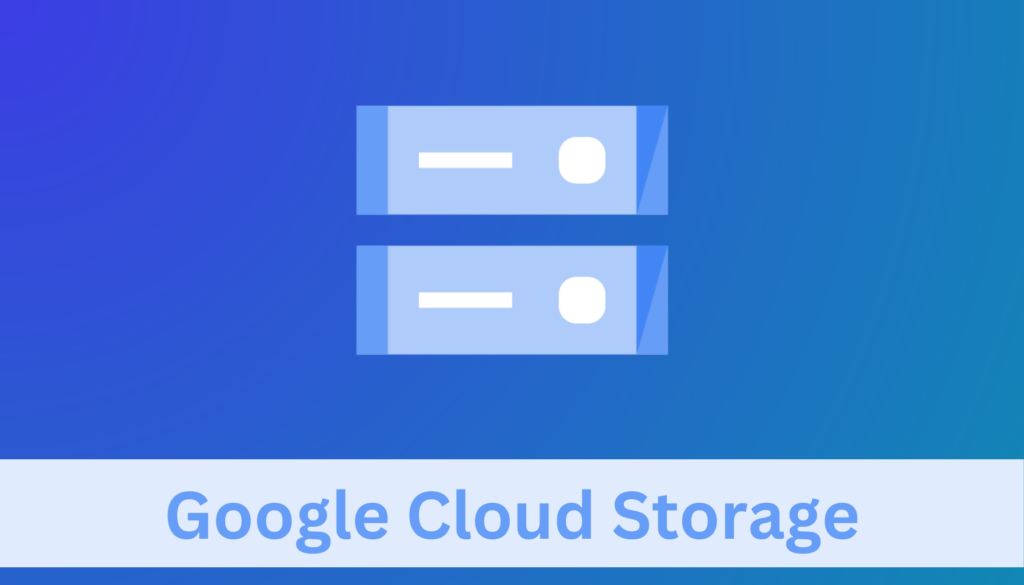What is Google Cloud Storage?
Google Cloud Storage is a robust, scalable, and fully managed Cloud Storage solution offered by Google Cloud. It comes with similar features to Amazon S3 provided by AWS. It provides a secure and highly accessible environment for storing a vast array of data types, from large-scale data lakes to everyday business files. Designed to support both structured and unstructured data, Google Cloud Storage is known for its flexibility, reliability, and integration capabilities with various cloud services and applications.
Google Cloud Storage Core Features
Google Cloud Storage provides various features and options to choose from. That includes:
1. Storage Classes and Options
Google Cloud Storage offers several storage classes, each designed to meet different requirements providing access frequency, data retrieval speed, and cost. The primary classes include:
- Standard Storage: Ideal for data that needs to be accessed frequently, such as active database storage or streaming content.
- Nearline Storage: A low-cost option for data accessed less than once a month, suitable for backup and disaster recovery.
- Coldline Storage: Even more cost-effective for data accessed less than once a quarter, perfect for long-term archiving.
- Archive Storage: The most economical class for data archival, with the longest retrieval time, ideal for regulatory and compliance archives.
2. Data Security and Compliance
Google takes its security seriously and provides many features to keep your data safe and secure. Such as:
- Encryption: Data is encrypted at rest and in transit, ensuring its protection.
- Identity and Access Management (IAM): This allows fine-grained control over who can access your data.
- Audit Logs: These provide detailed insights into who did what to your data, enhancing the transparency and traceability of data access.
- Compliance: Compliance with various standards (like HIPAA, GDPR, and others) is also a key aspect, making it suitable for businesses with strict regulatory requirements.
3. Integration with Other GCP Services
Cloud Storage seamlessly integrates with other Google Cloud services, enhancing its functionality and ease of use. Key integrations include:
- BigQuery: For analytics and data warehousing.
- Compute Engine and Google Kubernetes Engine (GKE): For computing resources.
- Dataflow and Dataproc: For data processing and machine learning operations.
4. Scalability and Performance Characteristics
Cloud Storage is designed for high scalability and performance. Key aspects include:
- Global Distribution: Data can be automatically replicated across multiple regions for high availability and disaster recovery.
- High Throughput: Optimized for performance, even with high-volume workloads.
- Scalable Storage: Easily scalable to accommodate growing data needs without any upfront investment.
Google Cloud Storage Pricing Components
Google Cloud Storage pricing is based on several factors, making it flexible to suit various needs and budgets. The key factors of pricing are:
- Storage Costs: Charged based on the amount of data stored, with prices varying between the different storage classes (Standard, Nearline, Coldline, and Archive).
- Network Usage: Charges for data transferred out of Google Cloud Storage to the internet or other regions.
- Operations Charges: Costs associated with various operations like creating, listing, and retrieving stored objects.
What do I get in Google Cloud Storage Free Tier usage?
Just like AWS, GCP also provides a free tier option. For Cloud Storage, you will get 5 GiB of free storage in the US region every month. This comes with some limitations that include:
- 5 GB of Standard Storage.
- 5,000 Class A Operations and 50,000 Class B Operations per month.
- 100 GB outbound data transfer from North America to each Google Cloud Data transfer destination (Australia and China excluded)
Source: Google Cloud Storage Pricing
Overall the pricing of Google Cloud Storage is structured and transparent, allowing users to predict and manage their expenses effectively.
How to optimize Google Cloud Storage Cost?
Cost optimizations are essential for every cloud service. Having a proper cost optimization strategy can save a lot of money in the long term. Here are some strategies for efficiently managing costs in Google Cloud Storage.
- Right-Sizing Storage Classes: Aligning data with the appropriate storage class (Standard, Nearline, Coldline, Archive) based on access frequency can lead to significant cost savings.
- Lifecycle Management: Implementing policies to automatically transition data to cheaper storage classes or delete obsolete data can reduce costs.
- Data Deduplication and Compression: Reducing redundant data and compressing data where possible can lower the storage volume, thus decreasing costs.
- Google Cloud’s Operations Suite: Offers insights into storage usage and trends, helping identify opportunities for cost reduction.
- Storage Growth Forecasts: Predictive analytics can be used to forecast future storage needs and costs, aiding in budget planning.
- Cost Alerts: Setting up alerts for when storage costs exceed a certain threshold helps in maintaining budget control.
- Caching Frequently Accessed Data: Using edge caching for frequently accessed data can reduce egress costs.
- Selecting Optimal Locations: Storing data in regions closer to most users can minimize data transfer costs.
- Batching Data Retrievals: Aggregating data retrieval requests can reduce the number of operations, thus lowering costs.
- Predictive Retrieval: Anticipating and scheduling data retrieval during off-peak hours or less expensive times can be cost-effective.
Conclusion
Optimizing costs and performance in Google Cloud Storage requires a thorough understanding of your data storage and access patterns. Consulting with professionals can help tailor your Google Cloud Storage solutions for optimal efficiency and cost-effectiveness.
Ready to Optimize Your Google Cloud Storage Usage?
[Reach out for specialized guidance] to ensure your setup is both cost-effective and high-performing.

